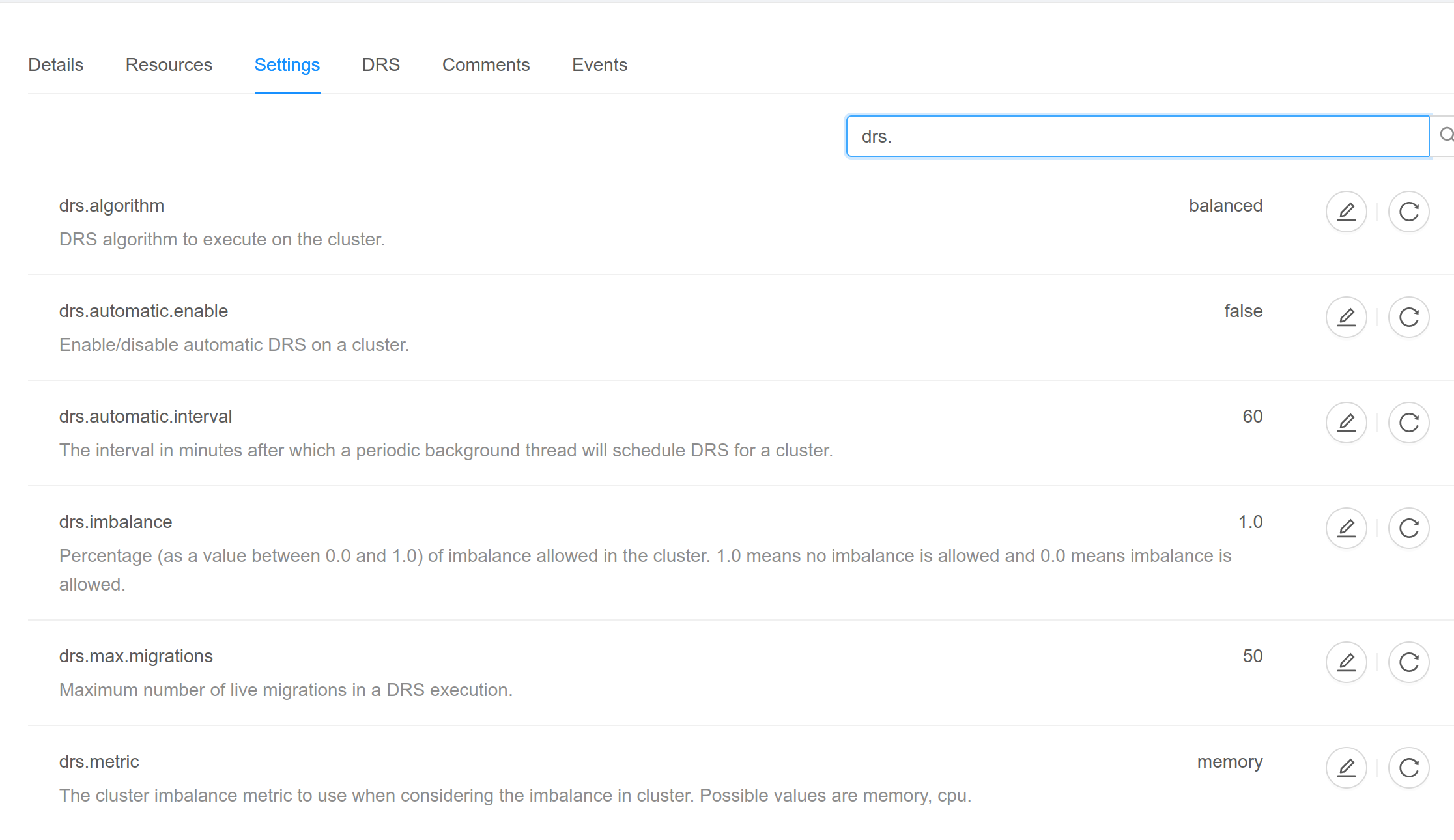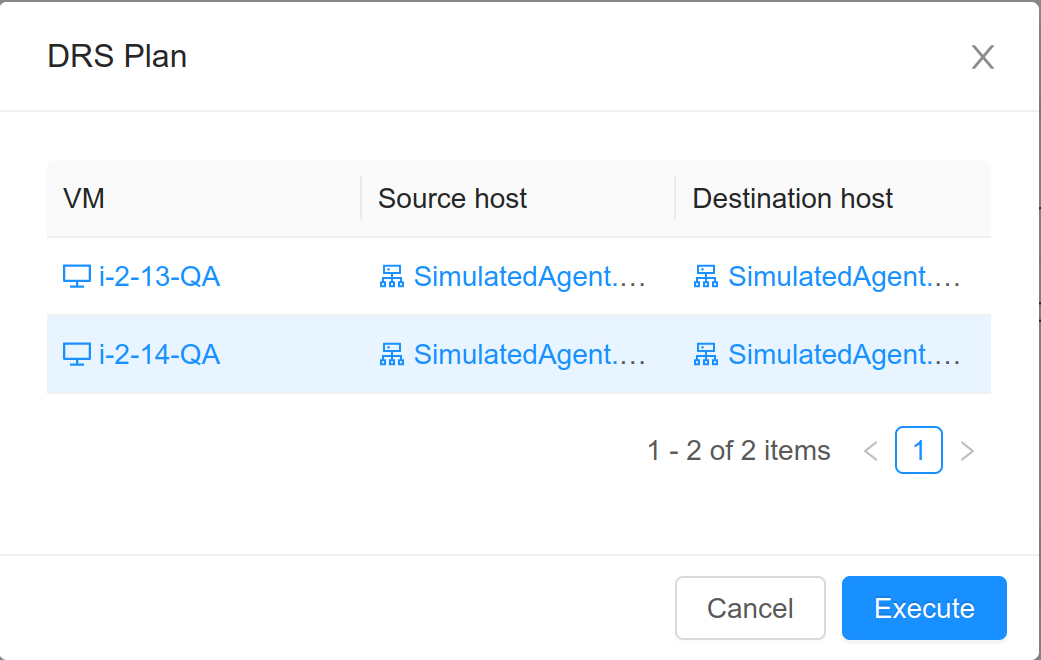Adding Clusters
Additional clusters can be added at any time to add a new set of hosts. For requirements and instructions, see Adding a Cluster.
CloudStack DRS
DRS is a process that can rebalance instances across hypervisor hosts in a cluster as defined by the algorithm selected. There are two algorithms available:
Condensed spread instances across hosts as densely as possible. This is useful for reducing the number of hosts used.
Balanced spread instances across hosts as evenly as possible. This is useful for reducing the load on each host. This is the default algorithm.
Note
Deployment planner will not consider DRS while deploying instances.
Configuring DRS
Following are the configuration parameters for DRS.
Parameter |
Default |
Description |
|---|---|---|
|
30 |
The interval in days after which the DRS events will be cleaned up. |
|
false |
Enable/disable automatic DRS on a cluster. |
|
60 |
The interval in minutes after which a periodic background thread will schedule DRS for a cluster. |
|
50 |
Maximum number of instances to be migrated in one DRS execution. |
|
condensed |
DRS algorithm to be executed on the cluster. Available algorithms - condensed, balanced. |
|
0.4 |
Percentage (as a value between 0.0 and 1.0) of imbalance allowed in the cluster. 1.0 means no imbalance is allowed and 0.0 means imbalance is allowed. |
|
memory |
The allocated resource metric to use for measuring imbalance for a cluster. Possible values are memory, cpu. |
Note
Scope of drs.plan.expire.interval is global and for rest is cluster level.
Note
Very high value for drs.max.migrations can result in management server using up all of it’s workers for DRS tasks
and not being able to execute other tasks.
There are some advanced parameters that can be configured for DRS. These parameters impact the way imbalance is calculated for a cluster. Do not change these parameters unless you know what you are doing.
Parameter |
Default |
Description |
|---|---|---|
|
used |
The metric type used to measure imbalance in a cluster. This can completely change the imbalance value. Possible values are free, used. |
|
true |
Whether to use ratio of selected metric & total. Useful when the cluster has hosts with different capacities. |
|
0.95 |
Threshold to ignore the metric for a host while calculating the imbalance to decide whether DRS is required for
a cluster. This is to avoid cases when the calculated imbalance gets skewed due to a single host having a very
high/low metric value resulting in imbalance being higher than 1. If |
Executing manual DRS on a cluster
DRS can also be manually executed for a cluster.
Follow these steps to execute DRS for a cluster using the UI:
Configure DRS parameters as per the requirement.

Open DRS tab for the cluster.

Select the iteration percentage to execute for the cluster.
Click on Generate DRS Plan button. A modal will appear showing migrations for that cluster as per the configured algorithm.

Validate the migrations, and click on Execute button to execute the suggested migrations.
Note
Only one DRS process can run for a cluster at a time. If you try to run DRS while another DRS process is running, the second process will fail.